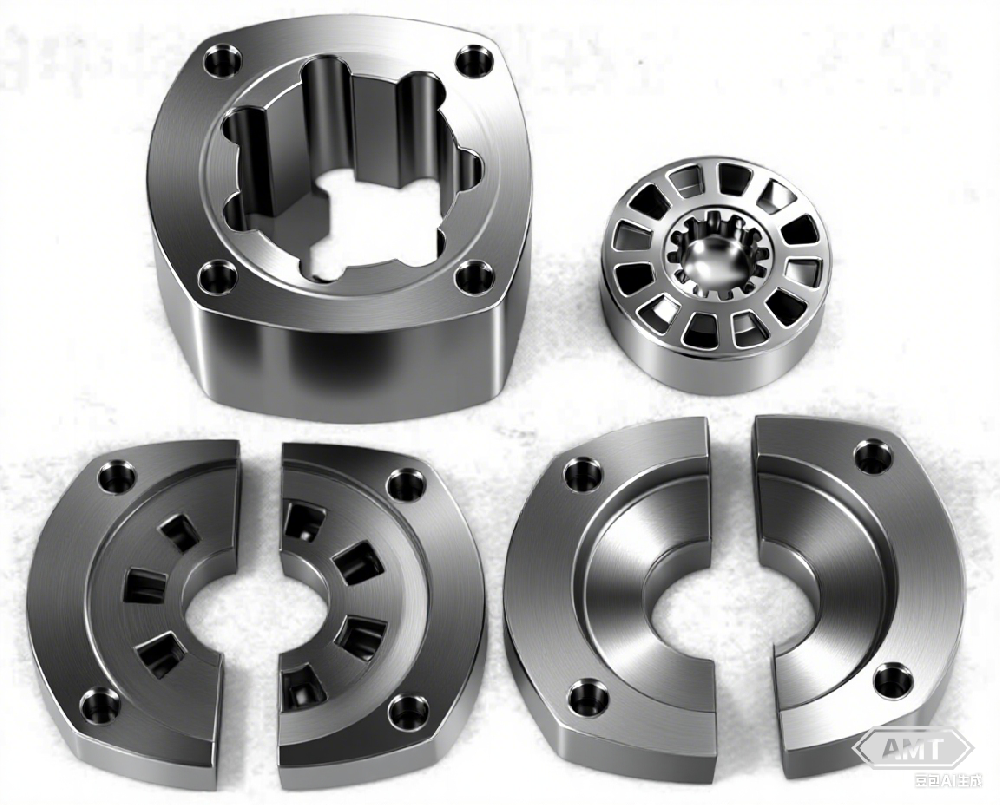Date:2025-07-24 Views:1003
High-torque, low-speed motors represent the hydraulic devices with the most growth potential in the market. These motors can replace mechanical powertrains and are compact, with external working elements serving as the package without requiring a housing or cover. Many working parts and valve components, as well as parts in oil passages (as shown in Figure 9-51), are manufactured using powder metallurgy due to its ability to form precise, complex shapes with good reproducibility. In one such torque motor currently on the market, the powder metallurgy parts account for approximately 1/3 of the motor's total weight, at around 4.6 kg.

Figure 9-51 Typical powder metallurgy parts in high-torque, low-speed motors
As the working elements also function as the housing, it is necessary to seal the inherent porosity in the powder metallurgy parts. Traditional copper infiltration sealing does not meet the required tolerance control, so polyester resin impregnation is commonly used instead. This method maintains part integrity, is clean, easy to use, and cost-effective.
The tolerances for the manufactured rotor components must be very precise. The spacing between grooves must be controlled within 0.038 mm, and the parts must be symmetrical to the same tolerance. After resin impregnation, these high-precision parts undergo finishing. Previously, these parts were made from ductile cast iron and final-shaped via planing. The switch to powder metallurgy parts has resulted in a material saving of 0.68 kg.
An exact calculation of cost and material savings is shown in Table 9-8.
Item | Powder Metallurgy Parts | Ductile Cast Iron Parts |
Purchase Price (USD) | 1.76 | 2.48 |
Finishing Labor Cost (USD) | 0.36 | 0.73 |
Finishing Production Cost (USD) | 1.45 | 2.88 |
Total (USD) | 3.57 | 6.09 |
Mass (kg) | 0.95 | 1.63 |
Leave your email for more ebooks and prices📫 !
Contact:Fidel
Tel:021-5512-8901
Mobile:19916725893
Email:sales7@atmsh.com
Address:No.398 Guiyang Road Yangpu China